To read Part 2, please go here.
In late August, a small group of artists awarded 2020 grants from Houston Arts Alliance (HAA) gathered on Zoom to talk about how their once-projected $15k grants were to be reduced by half, due to a Covid-affected City economy. With growing attention on the matter from the Houston arts community, they formed a group called Arts Accountability Houston (AAH).
AAH’s initial purpose was to tell HAA, and by extension the Houston Mayor’s Office of Cultural Affairs (MOCA), how artists, a vulnerable economic group, will suffer from these cuts. Another issue was the lack of clear communication and response from the City of Houston art agencies to the needs of this Covid-economy affected population. AAH’s argument for greater responsiveness from HAA, and questions about whether Houston can fulfill the grant awards, have developed into bigger, long-term questions around funding and supporting arts and culture throughout the city. (Part 2 of this series will deal specifically with Houston.)
How do cities and communities now and in the future fund arts and culture when the current model for doing so has collapsed in the face of a pandemic? In 1977, the Texas Legislature voted the use part of local hotel occupancy tax (HOT) for arts funding. Local governments could then use HOT revenue in part for funding the arts, which in turn promotes tourism and the convention/hotel industry. (HOT funds for the arts are generally based on the past year’s revenue totals.) With leeway for funding direction, city governments had a stable (and potentially growing) revenue stream.
Then the “black swan” of a global pandemic hit all regions of the US and Texas. Travel plummeted, so revenue from hotel tax did as well, thus so did money for arts and culture.This summer, the US federal government responded with the CARES Act, which provided for Texas $1.8 billion in relief to cities and counties with populations fewer than 500K and $3.2 billion to cities and counties with populations over 500K. Some of those communities, as exampled in this article, made available only a fraction of those resources to assist arts and culture industries.
But Covid economics revealed major inadequacies in the current arts and culture funding model. Creating new responses to this crisis is uncharted territory for any city-run arts and culture department. So how did various Texas cities act?
In preparation for this piece, I conducted interviews with various executive directors, managers and heads of municipal and county cultural affairs offices. I sampled both large and small communities from different regions of the state, to seek a general sense of how they responded to the economic crisis, what the different revenue sources for arts funding are, and how they anticipate future funding for cultural affairs and the arts in their areas. The replies ranged from the inspirational to the disturbing.
Austin
Due to the Covid-19 pandemic, the City of Austin now sees a shortfall of 46% HOT funds that goes toward its arts grants, with only $5.5 million available for 2021. The City’s cultural affairs office has had to shift to a new commitment to economic recovery.
Prior to the pandemic, the City of Austin Cultural Arts Division was working toward implementing what is called a “Resiliency Framework.” The Framework is a formula for taking various levels of equity into account for how the city distributes arts funds. It factors strong determinates for outcomes, such as race, financial vulnerability, economic inequality, geography, organizational and budget size, and systemic discrimination patterns, especially with the BIPOC, LGBTQ and disabled populations. All these indicators and more shape Austin’s funding model priorities, starting with base (smaller) amounts given to awardees most resilient to economic downturns. More complete and full amounts are given to awardees who are the most vulnerable and economically impacted arts groups.
By implementing the Resiliency Framework ahead of the planned ’21 date, Austin has been able to use its equity formula for those hurting the most during the shutdowns. Helped by Austin’s general funds and stimulus money from this summer’s CARES act, Cultural Affairs Executive Director Meghan Wells, her staff, the city Arts Commission and its Economic Development Department were able to put into place a sort of “arts safety net.”
Other Texas municipalities are looking toward this new model for arts funding.
San Antonio
Each city has specific expectations, and San Antonio residents expect a great deal of support for the arts. When I spoke to Krystal Jones, the marketing director for the city’s Office of Cultural Affairs, she told me about a few things San Antonio prepared. First, they restricted their portion of the CARES funding for individual artist and arts non-profits ($2 million for 40-plus arts organizations, and $600K for 150 local artists, with individual grants up to $5k).
San Antonio normally gets its arts funding with 100% from HOT money. Though it’s been reduced by 20% for 2020 and ’21, the City is supporting its arts by directing money from San Antonio’s general funds in the amount of $1.2 million. A lengthy resources page was quickly developed over one weekend during the March shutdown, with links to help artists and arts organizations find local and national resources.
San Antonio says the idea of diversifying its funding has long been something that has been identified as a need within the arts community, and it has been incorporated into the San Antonio’s longer-term Strategic Plan. As for the future, the City remains optimistic: “We’ll get back.”
El Paso
When the first reported Covid-19 infections cases were confirmed, El Paso shut down. Twenty-six City furloughs and layoffs ensued, and its Museum and Cultural Affairs Department (MCAD) faced a 13% budget reduction, and is now operating at 60% of pre-pandemic staff levels.
It also forced the same on the three local museums (El Paso Museum of Art, Museum of Archeology, and Museum of History) run by MCAD’s Museum Division. In addition, MCAD is the funding provider for public arts programs, individual artist grants, performing/visual arts events, etc. With HOT revenue already reduced by 50%, the city forecasts an 80% reduction for fiscal year ’21, which started in September.
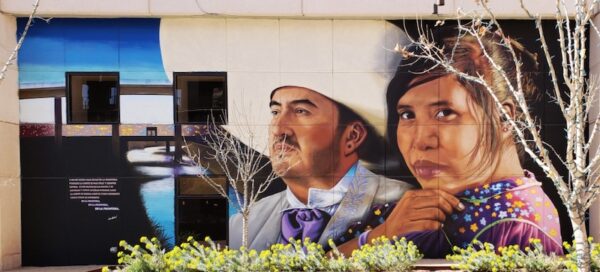
La Frontera, Jesus “Cimi” Alvarado, Martin “Blast” Zubia, mural at El Paso Art Festival Plaza, funded by grants from the El Paso Downtown Management District, City of El Paso Museums, Cultural Affairs Department’s Artist Incubator Program and The Downtown Mural Grant Program
Belt-tightening meant scaling and limiting all public arts programs. “Covid is a juggernaut,” says Ben Fyffe, the City of El Paso’s Director of Cultural Affairs & Recreation.
Despite the bad news, Fyffe says El Paso has a good problem in that the city’s elected officials are incredibly engaged and do not need justification for arts funding. MCAD partnered with the city Economic Development Department to come up with $137K for “mini operating support” for artists and arts organizations. So far, a total of 72 local artists and 5 organizations have been awarded. With help coming from its portion of CARES funding, El Paso was able to maintain funding for its largest arts organizations, which often employ workers from the creative sector.
Fyffe and MCAD, committed to easing the financial burden on the already financially burdened creative community, made good on 100% funding and “contractual obligations” to all artists and arts organizations alike for FY ’20. MCAD funding structure is a mix of HOT money, general funds, grant writing, a 2% Public Arts fund from capital projects, and smaller revenue sources such as the Texas Commission on the Arts. With diminished revenue from those sources, El Paso will need to rely on a Covid funding model for a couple of years. Though he is worried how the arts sector is the last to recover from an economic downturn, Fyffe remains hopeful. “People will need art to recover.”
Waco
With a creative community composed mostly of musicians, performing artists and emerging artists, Creative Waco (the local arts agency for the City and County of Waco) sensed its region would not get back to normal in the short or long term. Performing arts especially requires a Covid vaccine.
Creative Waco, headed by Fiona Bond, put together the Corona Virus Response for 2020 at the onset of the pandemic. In the second week of the initial shutdown, it put together a long resources page of national and state grant opportunities; in May its “Make it Through Corona” mini-grants program began handing out 19 awards of $250-500 until June; and in early April it launched “Make it in Waco,” an online market for artists and creatives (www.makeitinbwaco.com).
Bond proudly states that the City of Waco is 100% supportive of Creative Waco with a combination of general funds and city appropriations. Creative Waco does not use HOT funds. Instead it raises money for each specific, local project through area businesses, state and national grants, foundations, private and corporate sponsorships, and a percentage from sales from the “Make it in Waco” marketplace.
Small communities like Waco are disproportionately affected by a lack of arts funding. They are currently trying to filter through the bureaucratic morass of applying for Covid funding. Waco can apply for its allocation of $1.5 million from the CARES Act, but is uncertain as to how flexible the State of Texas will be about apportioning arts funding.
Creative Waco wants to make money available for arts non-profits as well as small businesses. In another instance of disparity, the NEA and the Mid-America Arts Alliance gave money to large cities rather than smaller communities. For Waco, barriers like this make a vulnerable arts sector even more so. Creative Waco is currently looking to make a new funding structure model as equitable as possible, like that of Austin’s new Cultural Affairs model.
Odessa
Like other municipalities, Odessa’s budget starts in mid-year with HOT funds based on the past year’s revenue totals. Which means Odessa Council for the Arts (OCA) is in good shape — for the short term. Its budget will be static ($700K for 2019 and 2020) into next year. In the fall of 2021 (FY ’22), Odessa will begin to see a shortfall.
Odessa is very dependent on energy sector revenue, and is impacted by Covid by not sending employees out in the field — therefore people are not renting hotel rooms, buying food, enjoying entertainment, attending cultural events, etc. OCA will focus on directing $291K in funding to tourism grants. This is needed to sell tickets, keep staff employed, and help generate ancillary revenue. Though OCA receives 15% of its city HOT money for funding, it also leverages funds from outside sources (private, corporate, sponsorships, grants).
Randy Ham, Director of OCA, sees the need to diversify revenue streams: “It’s not wise to rely on a single funding source.” OCA takes a particularly active role in cultivating support for arts funding from the City. A recently commissioned economic impact study showed how Odessa arts bring in $6 million annually in return benefits. OCA also hosts an Arts Advocacy event every April, to have City Council members hear from grantees about how arts funding affects them, helps the local economy, creates jobs, etc. (OCA even hired a musician to entertain the City Council during the budget hearings.)
Nonetheless, Odessa will need to shape a more robust Covid funding model. So far, two Odessa arts organizations and former grantees went under due to the Covid recession: Allegro Corral (nearly 20 years in existence), and the Artisan Arts Walk (launched last year) — which shows that the pandemic can hit arts organizations both established and new.
Corpus Christi
Corpus Christi’s commitment to the arts had shrunk even before the pandemic. With no grants offered for individual artists, one may ask whether its City Council is sufficiently supportive of local artists and arts organizations. The sentiment at the City level seems to be “Why do we need the arts?”
The pandemic economy now means that Corpus Christi’s Arts and Culture Commission’s (ACC) 2021 arts grants program will be suspended. The ACC used to receive $300K each year from HOT funds — but for the past three years that was reduced to $200K. Compounding the arts community’s problem is that the ACC cannot provide emergency grants until next year, as it requires an ordinance change from the City Council in the Spring of ’21. Even at that point it will be three to four months before awards can be dispersed.
On the plus side, the ACC has been able to lift restrictions for this year’s $10K grantees of the requirement to have matching money available for the same purpose.
Most unnerving is the report that the City’s Percentage for Arts Program (a city ordinance of 1.25% of any major capital project) has not provided nor submitted money for the arts in three or four years. In one recent example, a call for a mural project was put out for a capital project, where a submission was accepted. Before it could be awarded, the ACC was told by the City Attorney and the engineering department that the “money was not there.” This raises serious questions about the appropriation of public funds and the enforcement of city ordinances.
One bright spot in the city has been Corpus Christi’s Art Museum of South Texas. Though admission is down 50%, membership took a dive, there were two cancelled annual fundraisers, and there was no lease money coming in from its closed cafe, the Museum has not furloughed any of its 18 full-time staff employees. As Executive Director Sara Morgan put it: “The Museum’s role must be part of the economic recovery for the community.” At this time there has been discussion within the city’s creative community to form an advocacy group to argue that the arts are needed. “We turn to creativity for our relief”, says Morgan.
****
Though responses to the Covid economy have varied across the state, some art agencies and communities have been resourceful enough to mitigate the impact on the most vulnerable in their arts sectors. At the very least, each local cultural affairs office realizes that a serious reassessment of their funding model to support the arts of their region will be necessary in the post-pandemic world.
Next up: How has Houston’s art agencies, the Mayor’s Office of Cultural Affairs, and Houston Arts Alliance responded to the Covid economic crisis? And what is happening with their relationship to Houston’s arts community and the formation of Arts Accountability Houston?
To read Part 2, please go here.


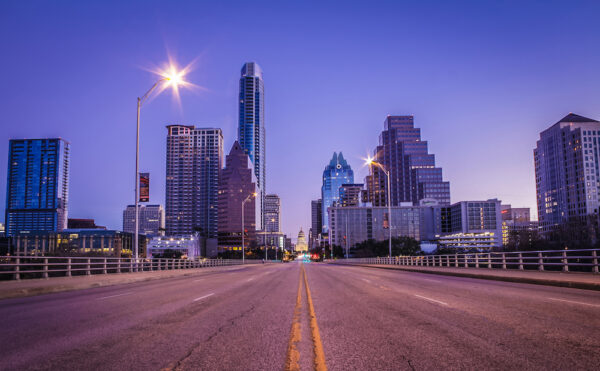
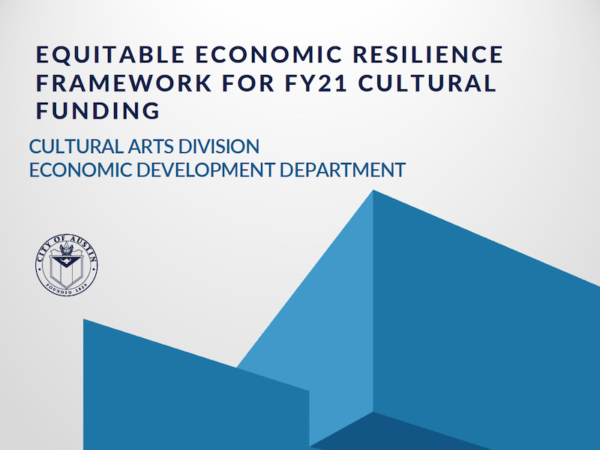

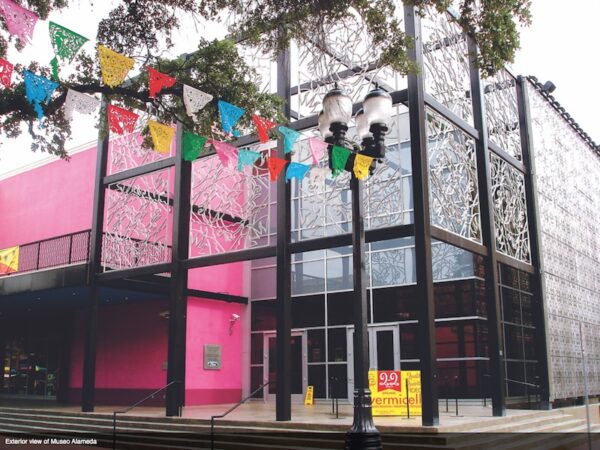
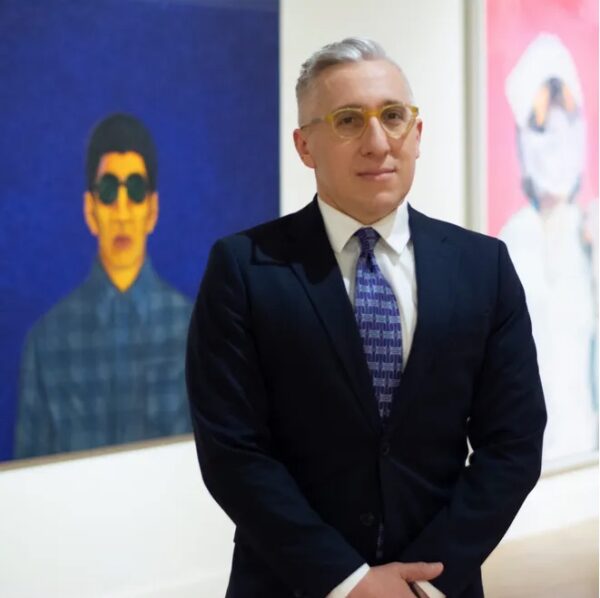

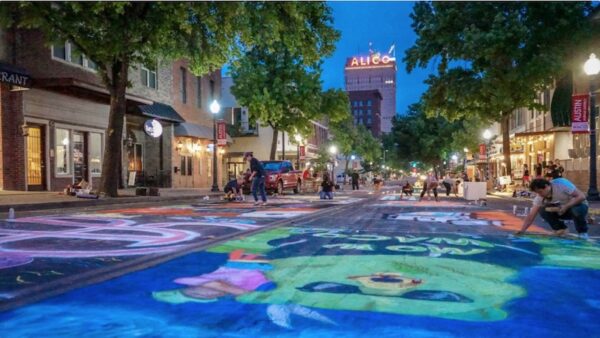
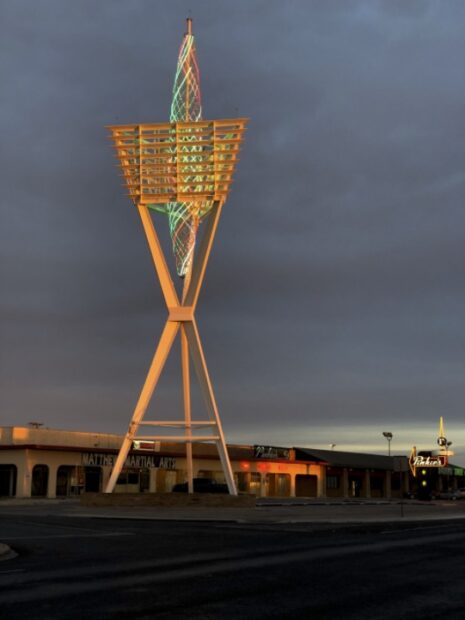



3 comments
Fascinating and important research – thank you!
Very interesting research, I’d be curious to see what some of the North Texas cities are doing.
This is very useful information as we look toward the future of arts funding in Texas, as well as across the country.